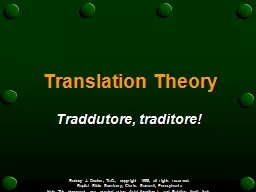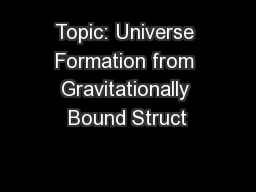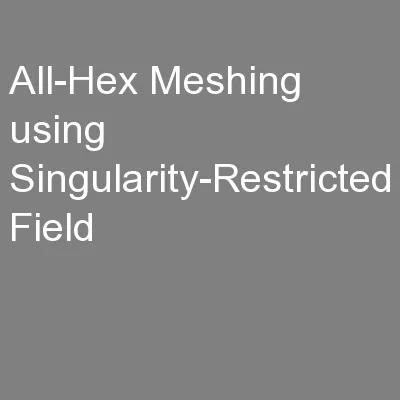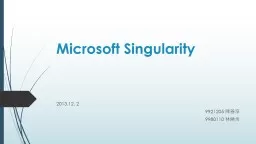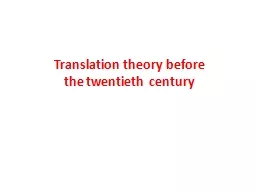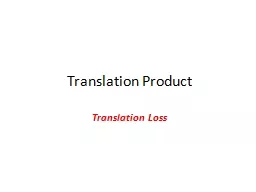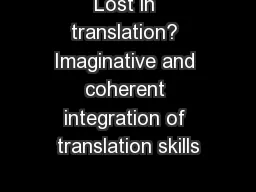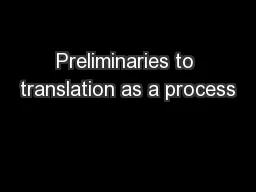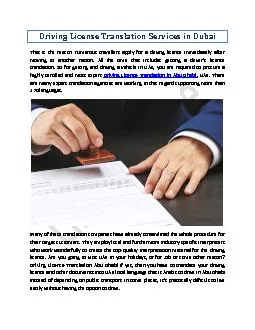PPT-Professional translation in a pre-Singularity world
Author : marina-yarberry | Published Date : 2017-04-26
its all about the readers Mikel L Forcada Universitat dAlacant Spain Prompsit Language Engineering Elx Spain European Association for Machine Translation All
Presentation Embed Code
Download Presentation
Download Presentation The PPT/PDF document "Professional translation in a pre-Singul..." is the property of its rightful owner. Permission is granted to download and print the materials on this website for personal, non-commercial use only, and to display it on your personal computer provided you do not modify the materials and that you retain all copyright notices contained in the materials. By downloading content from our website, you accept the terms of this agreement.
Professional translation in a pre-Singularity world: Transcript
Download Rules Of Document
"Professional translation in a pre-Singularity world"The content belongs to its owner. You may download and print it for personal use, without modification, and keep all copyright notices. By downloading, you agree to these terms.
Related Documents


